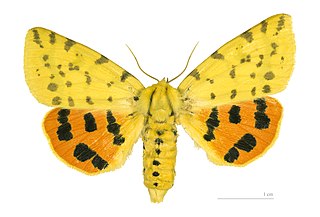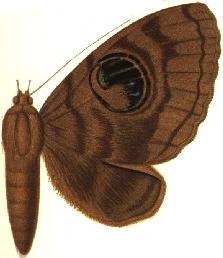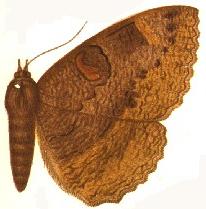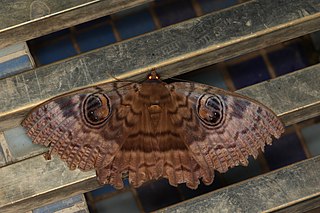
HMS Erebus was a Hecla-class bomb vessel constructed by the Royal Navy in Pembroke dockyard, Wales, in 1826. The vessel was the second in the Royal Navy named after Erebus, the personification of darkness in Greek mythology.

The Mount Erebus disaster occurred on 28 November 1979 when Air New Zealand Flight 901 (TE901) flew into Mount Erebus on Ross Island, Antarctica, killing all 237 passengers and 20 crew on board. Air New Zealand had been operating scheduled Antarctic sightseeing flights since 1977. This flight was supposed to leave Auckland Airport in the morning and spend a few hours flying over the Antarctic continent, before returning to Auckland in the evening via Christchurch.

Alpinia purpurata, commonly referred to as red ginger, also called ostrich plume and pink cone ginger, are native Malaysian plants with showy flowers on long brightly colored red bracts. They look like the bloom, but the true flower is the small white flower on top.

HMS Terror was a specialised warship and a newly developed bomb vessel constructed for the Royal Navy in 1813. She participated in several battles of the War of 1812, including the Battle of Baltimore with the bombardment of Fort McHenry. She was converted into a polar exploration ship two decades later, and participated in George Back's Arctic expedition of 1836–1837, the successful Ross expedition to the Antarctic of 1839 to 1843, and Sir John Franklin's ill-fated attempt to force the Northwest Passage in 1845, during which she was lost with all hands along with HMS Erebus.
Homotima is a genus of moth in the family Gelechiidae. It contains the species Homotima purpurata, which is found in New Guinea.

Erebus is a genus of moths in the family Erebidae.

Diacrisia purpurata, the purple tiger, is a moth of the subfamily Arctiinae. The species was first described by Carl Linnaeus in his 1758 10th edition of Systema Naturae. It is found in Europe, Anatolia, Syria, Transcaucasus, Central Asia, southern Siberia, Mongolia, Amur Region, northern China, Korea and Japan (Honshu).

Erebus nyctaculis is a moth of the family Erebidae. It is found from Mindanao and Indonesia south to northern Australia.

Erebus strigipennis is a moth of the family Erebidae. It is found in India (Meghalaya), Cambodia and Vietnam.

Erebus macfarlanei is a moth of the family Erebidae. It is found in Queensland and from the Southern Moluccas and Indonesia to the Solomon Islands.

Erebus crepuscularis is a moth of the family Erebidae first described by Carl Linnaeus in his 1758 10th edition of Systema Naturae. It is found in Indonesia, New Guinea, Taiwan and the Australian states of Queensland and New South Wales.

Erebus variegata is a moth of the family Erebidae. It is found on the Solomon Islands and New Guinea.

Erebus intermedia is a moth of the family Erebidae. It is found in Asia, including the Bismarck Archipelago and Sulawesi.

Erebus gemmans is a moth of the family Erebidae. It is found in Asia, including China, India, Bangladesh, Bhutan, Nepal, Thailand, Burma, Malaysia, Taiwan, Sumatra and Borneo.

Erebus Glacier is a glacier draining the lower southern slopes of Mount Erebus, Ross Island, Antarctica. It flows west to Erebus Bay where it forms the floating Erebus Glacier Tongue. It was named in association with Mount Erebus by the British National Antarctic Expedition, 1901–04, under Robert Falcon Scott.

Erebus Motorsport is an Australian motor racing team. The team competes in the Supercars Championship with two Chevrolet Camaro ZL1s. The team's current drivers are Jack Le Brocq and Todd Hazelwood.

Erebus walkeri is a moth of the family Erebidae. It is found in Angola, the Comoros, the Democratic Republic of Congo, Ghana, Kenya, La Réunion, Madagascar, Malawi, Mauritius, Mozambique, Nigeria, Rwanda, the Seychelles, South Africa (KwaZulu-Natal), São Tomé & Principe, Tanzania, Gambia, Uganda, Zambia and Zimbabwe.

Erebus hieroglyphica is a moth of the family Erebidae. It is found from the Oriental tropical countries such as India, Pakistan, Sri Lanka, Bangladesh, Japan, China, Taiwan, Cambodia, Laos, Myanmar, Thailand, Vietnam, Indonesia, Philippines, Malaysia, Singapore, and Korea. The habitat consist of lowland forests.
Erebus glaucopis, the Himalayan blue owl-moth is a moth of the family Erebidae. It is found in Bangladesh, the north-western Himalayas, China, Nepal and Thailand.

Erebus pilosa is a moth of the family Erebidae. It is found in China and Taiwan.










